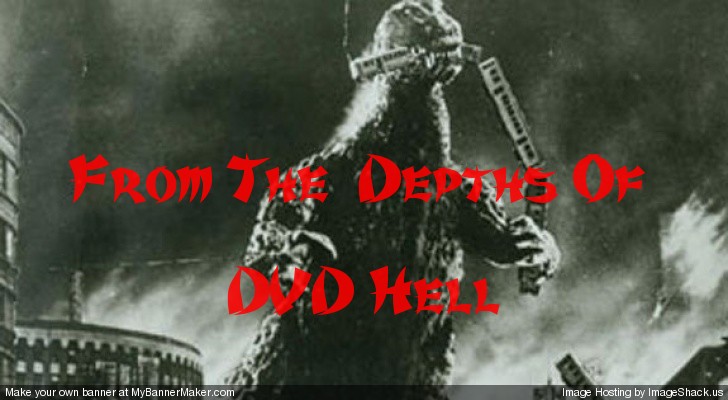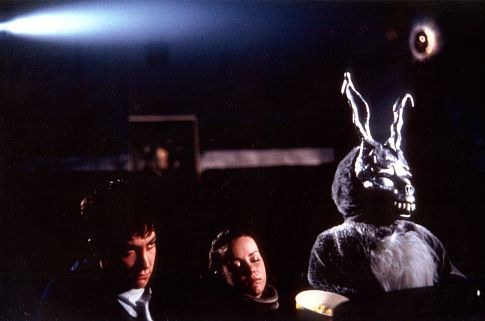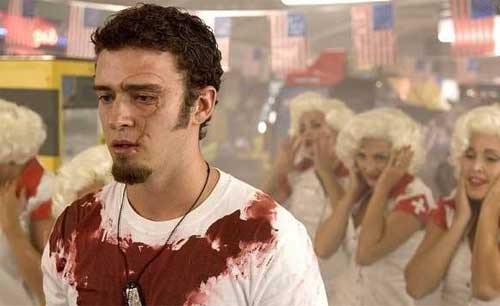Director: Sion Sono
Released: 2015
Starring: Reina
Triendl, Mariko Shinoda, Erina Mano, Yuki Sakurai, Aki Hiraoka, Ami
Tomite
Plot: Mitsuko (Triendl) a shy
school girl finds her life thrown into chaos when she survives the
massacre of her classmates during a class field trip, which is only
the start of the weird and strange journey she now finds herself on
Review: After
delivering a one two punch with his previous releases “Why Don’t You Play In Hell” and “Tokyo Tribe” there was certainly a level
of excitement in how director Sion Sono would follow it up, more so
when both films were so different from each other let much pretty much anything out there highlighting once
more his unique approach to film making which has unsurprisingly seen
him drawing comparisons to Takashi Miike’s outlaw period.
Opening with the
massacre of a group of school girls by an “Evil Dead” style
ominious wind which somehow has the ability to tear coaches in half
and randomly decapitate anyone who gets in its way, with Sono perhaps
in some way trying to beat his own record for school girl he set with
the memorable subway sequence in “Suicide Club”. From this
opening though things only get progressively more weird and surreal
as Mitsuko now starts find herself moving from one bloody set piece
to the next which was certainly hinted at with the trailer and which
is certainly delivered on here and more.
Considering what
starts off a seemingly straightforward soon mutates into something
much different I will warn now Spoilers ahead as
Sono once here has crafted something not only unique but equally a
pain in the ass to attempt to explain which I will obviously attempt
now.
Not
content just to make another schoolgirl massacre movie, with “Tag”
he truly catches the audience off guard as Misuko
finds herself on a surreal journey which she constantly finds herself
suddenly being thrust into different situations which sees her one
moment running away from a high school massacre being carried out by
the heavily armed teachers to the next moment being married to a
groom with a pigs head. Some how Sono manages to pull the same trick
which David Lynch has hung the best part of his career on by managing
to somehow hold our attention for this ride even if at time you
really have no idea if Sono knows the direction is going with the
film and perhaps just making it up as he goes.
Taking
inspiration from Yusuke Yamada’s 2001 novel which sees people who
share the same surname being hunted down and which was turned into an
ambitious five movie series. Here though we are given a world
populated seemingly only by women, with the only men being the
aforementioned pig man hybrid which is certainly a departure from the
source material while retaining the theme of characters having to
continiously run to ensure their survival which really is what ties
the various characters Misuko finds herself suddenly turned into
while the worlds slowly
begin to blend together as the film builds to a frustratingly
disappointing final reveal.
For
the most part its an entertaining and highly unique ride we are taken
on here with Sono walking a line between often
amusingly over the top grindhouse
splatter and arthouse style plotting which here somehow works as we
switch from scenes of feminist solidarity to scenes of a wedding
massacre or mass schoolgirl slaughter and perhaps because of these
constant switches the film certainly holds the audiences attention no
doubt as much as its baffling them. Still this is not a film intended
for the mainstream especially when Sono is clearly crafting a film
made of moments which intrest him and perhaps with a more cynical eye
could just been seen as three half baked projected stitched together
by with visceral imagery and sheer randomness.
Certainly
there is an attempt to build a workable multiverse theory to justify
the changes in scene of the fact that the actress playing Miksuko
changes with each new setting, a transition certainly made easier by
Mariko Shinoda and Erina Mano being as capable leading ladies as
Reina Triendl able to carry a sense of familiarity between the three
personas while helped
further by Yuki Sakurai
constant guiding presence
throughout the film. At the
same time to have schoolgirls justify the deep thinking of how this
world work is alittle hard to take as seriously as Sono hoped it
would, but atleast he throws in a random Gator attack to hold our
attention.
While
this might not be his best film to date, there is certainly enough to
keep things entertaining while its tight run time only helps it
further. However if this is your first experience with Sono’s work
you might want to check out the likes of “Tokyo Tribe” or “Love
Exposure” to understand his appeal as a director but this is still
a fun
if completely random watch all the same even if the pay off is weak.

























